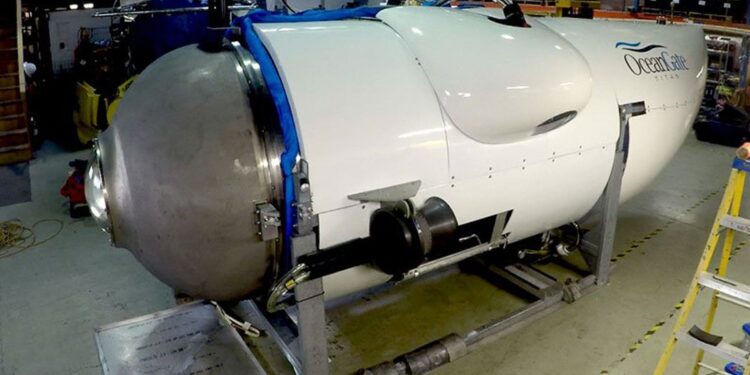:max_bytes(150000):strip_icc():format(jpeg)/titan-submersible-061724-2-dbff604dcd09420b912bd8469df66ba5.jpg)
A former passenger on OceanGate’s Titan submersible said during a U.S. Coast Guard hearing this week that the vessel ultimately “wasn’t supposed to be safe,” as he understood the dangers involved in exploring the Titanic wreckage before taking part in two previous dives.
Fred Hagen, an OceanGate mission specialist — which is how the company referred to its passengers — appeared at the Coast Guard’s ongoing hearing into the Titan tragedy on Friday, Sept. 20. He explained the experience from the perspective of someone who was previously onboard.
Hagen called the Titan dive a “high-risk endeavor in which a dedicated attempt was made to adhere to a culture of safety,” ABC News reports.
“It was not safe diving in the Titan and it was never supposed to be safe,” Hagen said.
Courtesy of Fred Hagen
“Anyone that felt safe going to depths in the Titan was deluded or delusional. It was an experimental vessel, it was clear that it was dangerous,” Hagen added, per a video shared by ABC News 4. “It’s kind of like jumping out of an airplane. You don’t do it because it’s safe, you do it because it’s an adrenaline rush.”
Hagen then explained that he was not “going down in search of safety,” but rather “exploration.” He previously told PEOPLE that participating in a dive is “a highly risky endeavor that could result in death,” something that passengers “clearly understand.”
Five people — including OceanGate CEO Stockton Rush — died in the implosion in June 2023. The Coast Guard’s hearing kicked off on Monday, Sept. 16, and has since highlighted the final “all good here” message from the doomed voyage before the submersible lost contact with the surface, as well as other first-hand accounts from mission specialists.
The four other people onboard the Titan who died in the tragedy were explorer Paul-Henri Nargeolet; adventurer Hamish Harding; and father and son Shahzada and Suleman Dawood.
Hagen — who took part in dives in July 2021 and July 2022 to view the wreckage of the Titanic — also detailed “the paradigm that we had to be comfortable with,” per ABC News, which was that there “were limited assets” that could rescue passengers if something were to go wrong during the dives.
As he explained, citing conversations he had with people such as Nargeolet, those assets “probably could not be organized logistically and scrambled in time to save anyone if something went wrong” on the submersible.
Never miss a story — sign up for PEOPLE’s free daily newsletter to stay up-to-date on the best of what PEOPLE has to offer, from celebrity news to compelling human interest stories.
During the hearing, Hagen also recalled an “incident” in 2021 in which multiple bolts “shot off like bullets” when a crane operator abruptly let go of the submersible on the deck days before a dive, per CNN. During that dive in particular, Hagen remembered, the Titan was free-falling for about two-and-a-half hours, according to CNN. He also cited another dive in which the submersible was temporarily stuck in the Titanic‘s wreckage, which he described in video shared by ABC News 4.
“We saw all the normal, iconic sites, and I wanted to investigate the area of the rupture,” Hagen said. “Of course, there’s a lot of currents swirling around and we briefly got stuck. It was just, like, pipes and things. When I say stuck, we weren’t stuck — I doubt if it was more than a minute or two.”
Hagen’s latest comments during the hearing come days after the U.S. Coast Guard released footage of the Titan wreckage on the floor of the North Atlantic Ocean, taken by a remotely operated vehicle. As the Coast Guard noted in a video description, the footage “led to the conclusive evidence of the catastrophic loss of the submersible Titan and the death of all five members aboard.”






